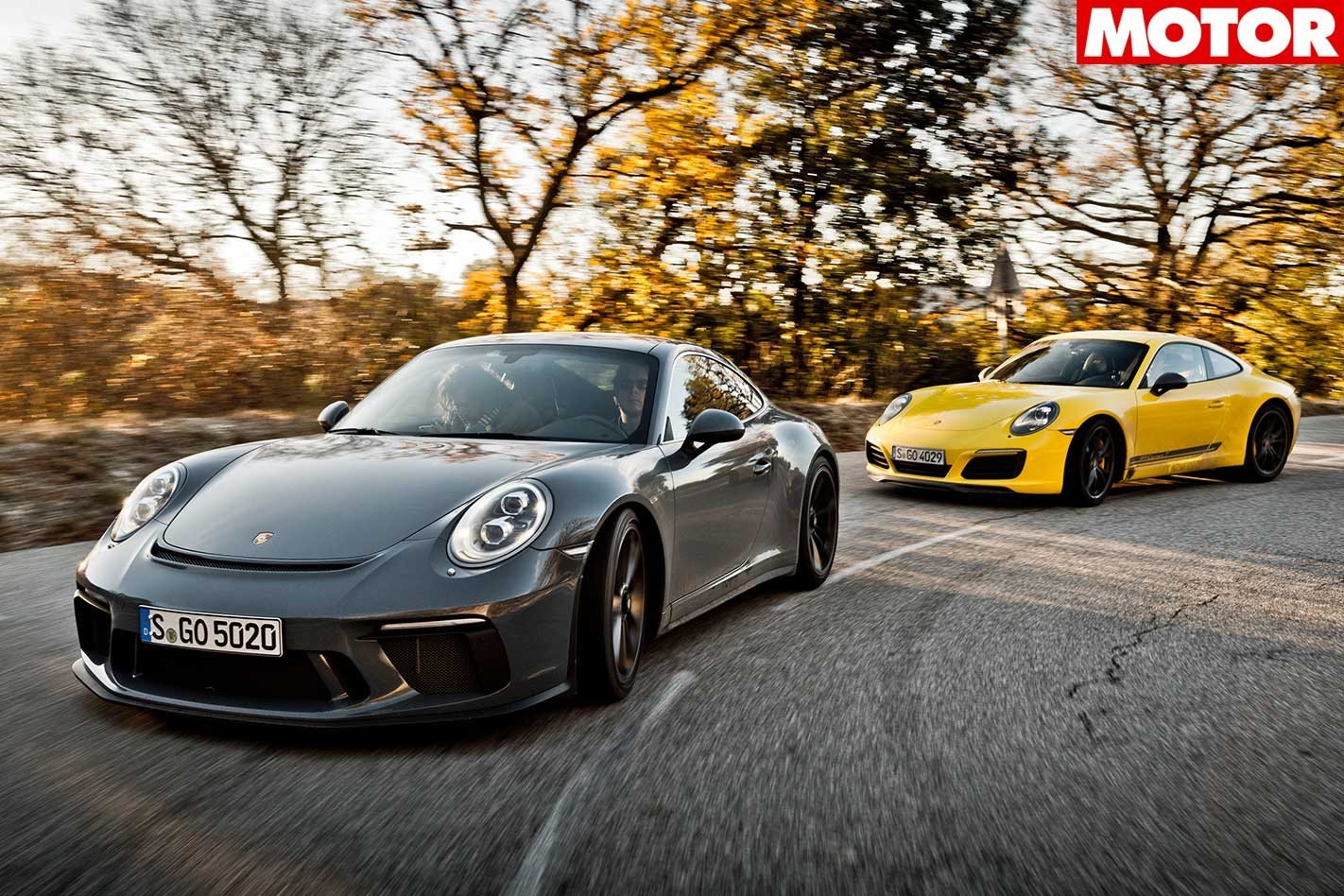It’s early on a very chilly morning. In an ideal world the alarm clock would have been set much later. But with two new, wingless 911 Porsches to play with, it seems like one of those Gen Y, first-world problems.
Still, the firing order of the flat sixes suggests we wait a minute for the cylinders to collect themselves and for everything to thaw. Once I’m somewhat coherent, my thoughts immediately turn to the frosted yellow Carrera T idling away.
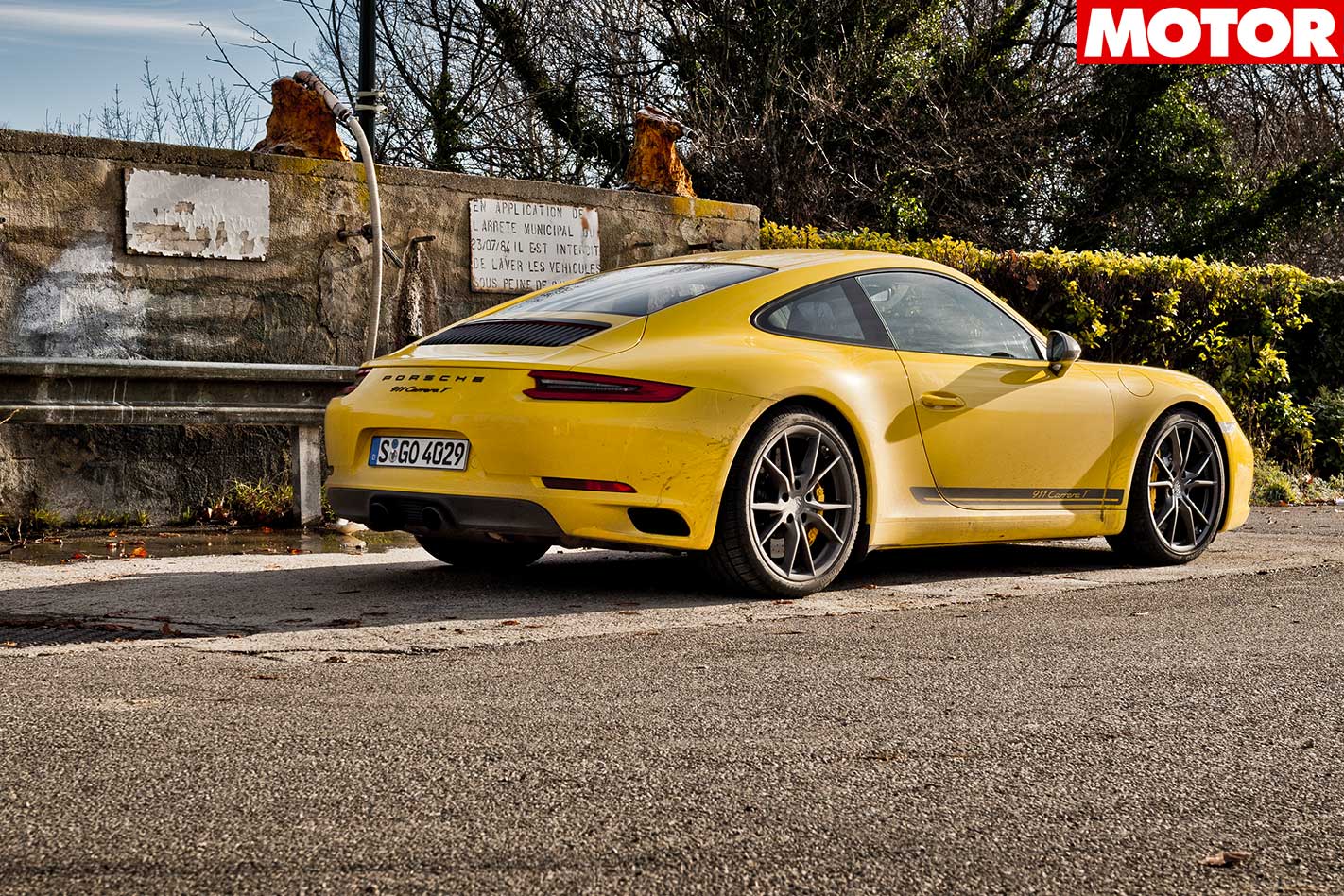
No doubt it’s bound to generate maximum return on investment – for Porsche especially – given its special-model status. Although, it’s too early and the air is too cold for my brain to comprehend value equations.
The Carrera T is the first Porsche marked under the recently introduced heritage banner (the next model is believed to be the GT Speedster due for release later this year). It’s current counterpart is the GT3 Touring which, when you break it down, is a de-winged 991.2 911 GT3 with the spirit of the 911 R (including the naturally aspirated 4.0-litre flat six with 368kW/460Nm).
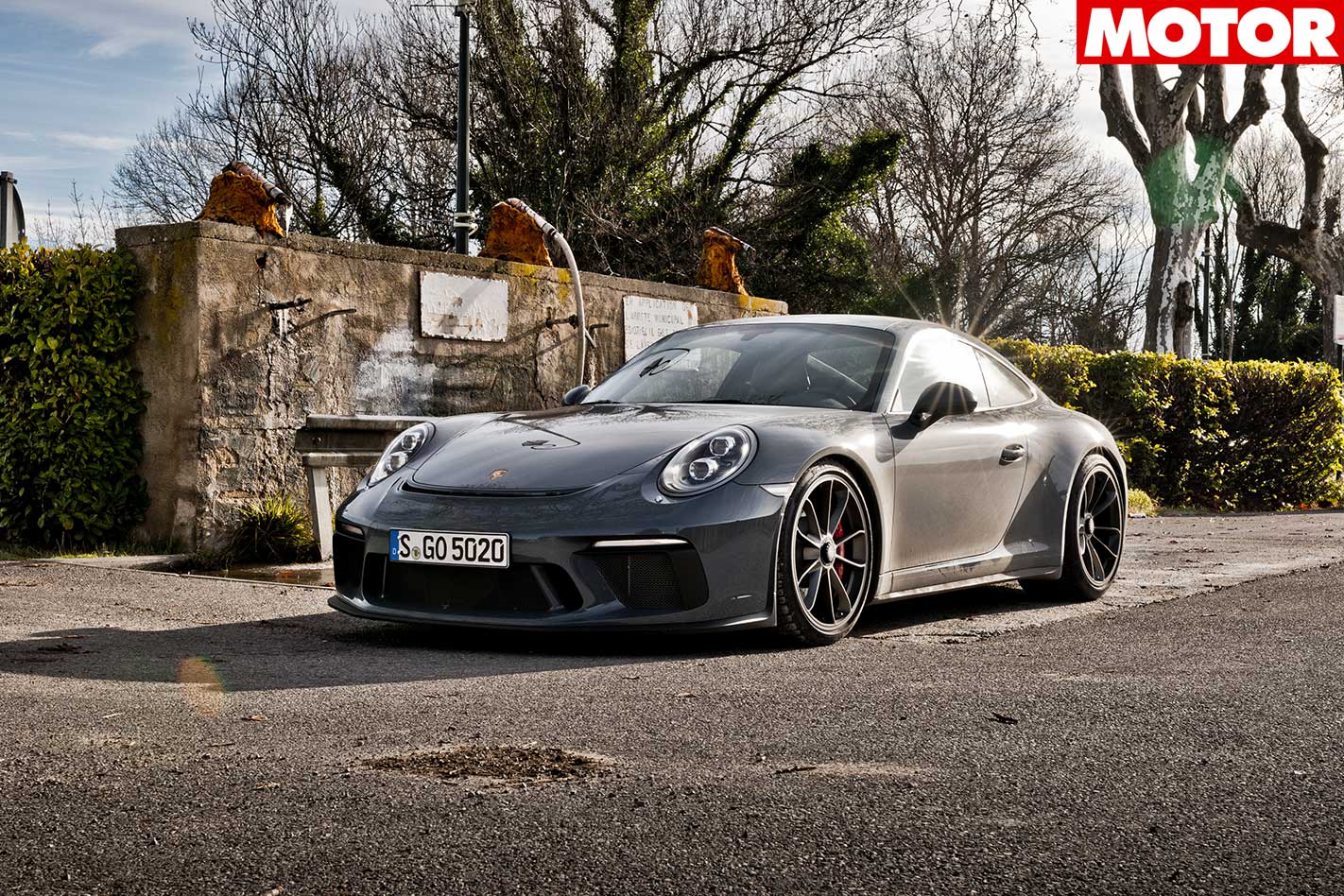
To celebrate the feat, we travelled to the Maritime Alps high above Nice where the midday temperature hardly nudges double digits – hence both cars are shod with soft-compound winter tyres.
Leading the way is the new $326,900 911 GT3 Touring, which follows the same less-is-more theme as the Carrera T. It swaps the dinner-table wing for the stealth spoiler set of the 911 R, adding black accents to the light clusters front and rear.
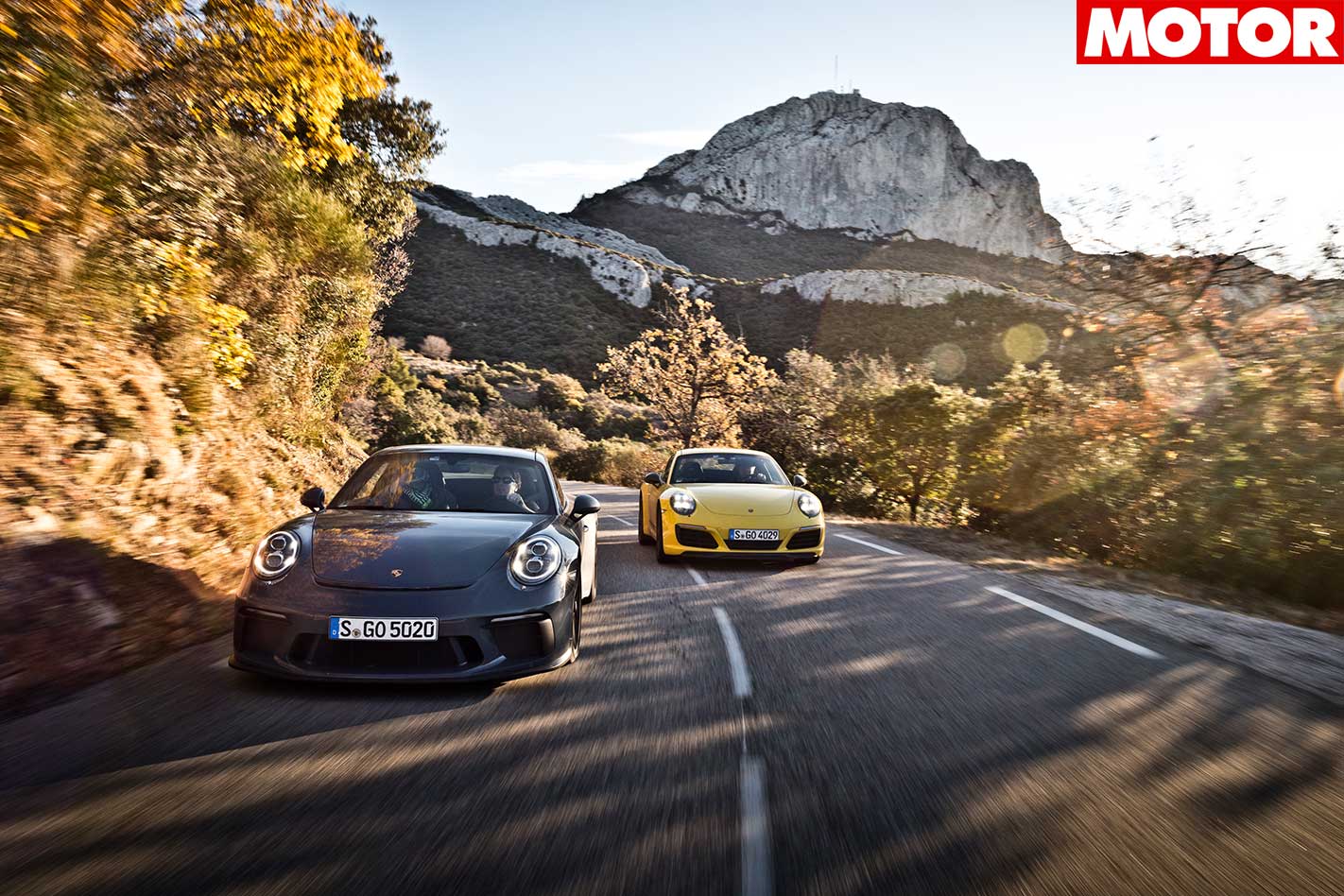
Inside, the Carrera T gains a bespoke, colour-coded cabin trim boasting yellow belts, yellow fabric door openings, yellow stitching and yellow 911 embroidery. The infotainment system, rear seats and air-conditioning can be fitted free of charge, but those checking the scales closely will delete them. Every gram counts; which explains why our test car has a big black hole in its centre stack. It all depends if you want comfort or ultimate performance out of your 911.
While the GT3 Touring can only be had with a six-speed manual, the Carrera T is offered in two- or three-pedal guise. Sadly, Porsche chose the seven-speed manual ’box over the closer-ratio six-speeder of the GT3.
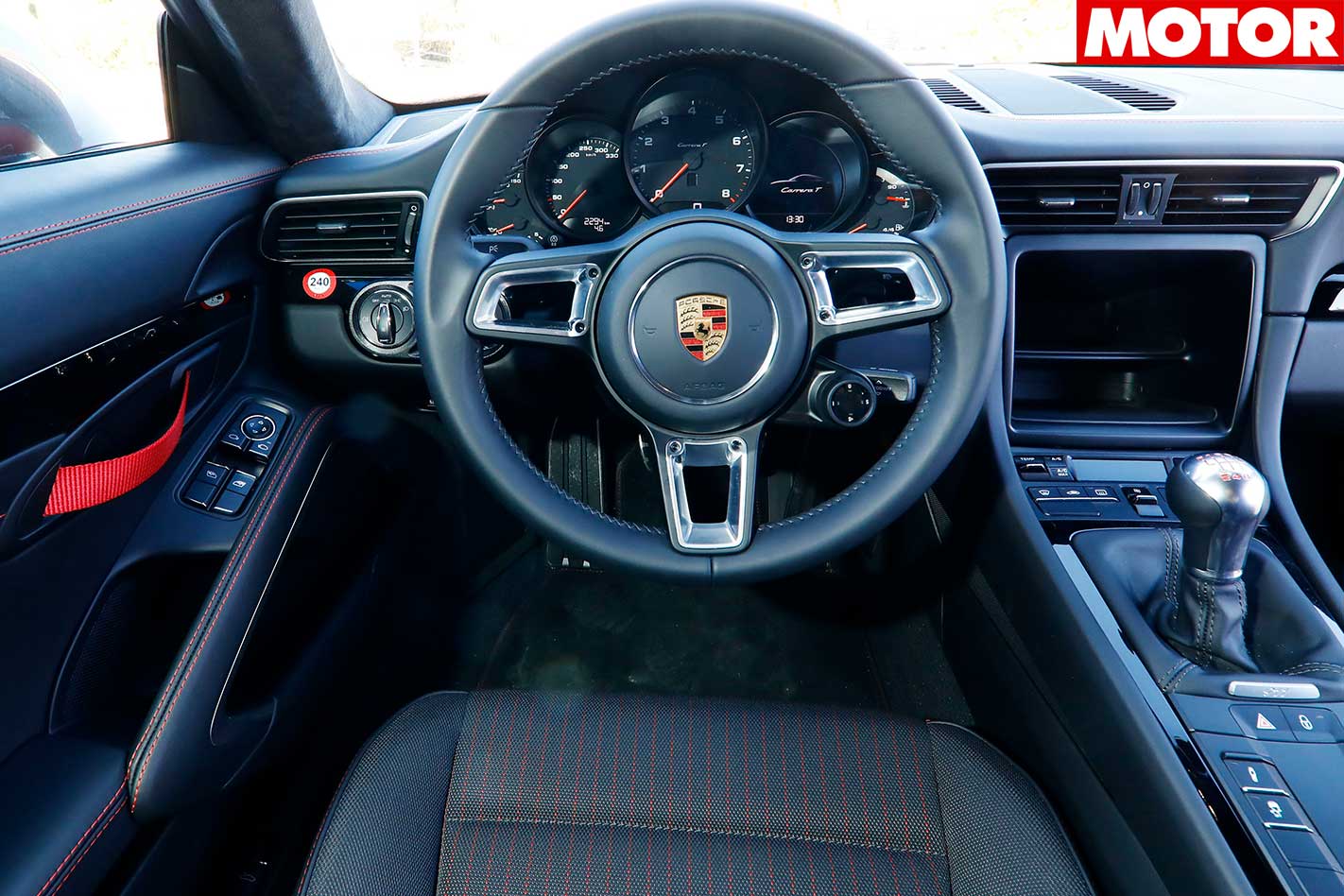
In many ways, the GT3 Touring would also be better off with PDK – but it isn’t offered. Walter Rohrl, who owns the collectable 911 R, calls the decision to tie the Touring specification to the manual gearbox “impolite”. I call it unfortunate. Why, you ask? Because the PDK version is not only more relaxed, it’s substantially quicker.
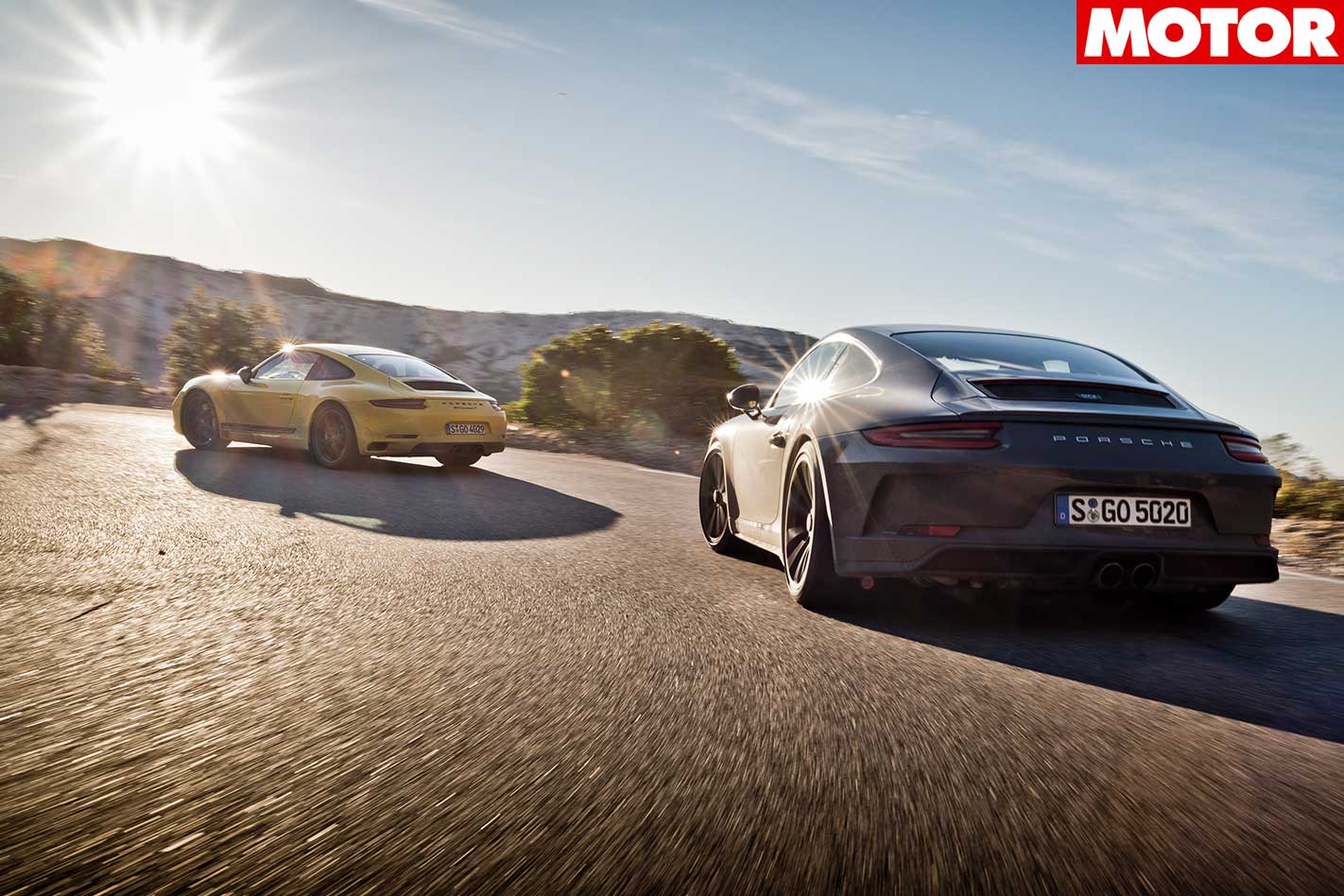
Then, of course, there’s the time factor. According to Porsche, the 368kW GT3 Touring can do the 0-100km/h sprint in 3.9sec. That’s lightning fast for sure, but then, the 272kW, PDK-equipped Carrera T is only 0.3sec slower to the same marker (4.5sec for the manual).
Conversely, pitch the three-pedal Touring against the winged two-pedal GT3 and the deficit is five tenths. Put stick against stick and, unsurprisingly, the GT3 Touring will drive circles around the Carrera T – despite Porsche speeding up the gearing of the latter.
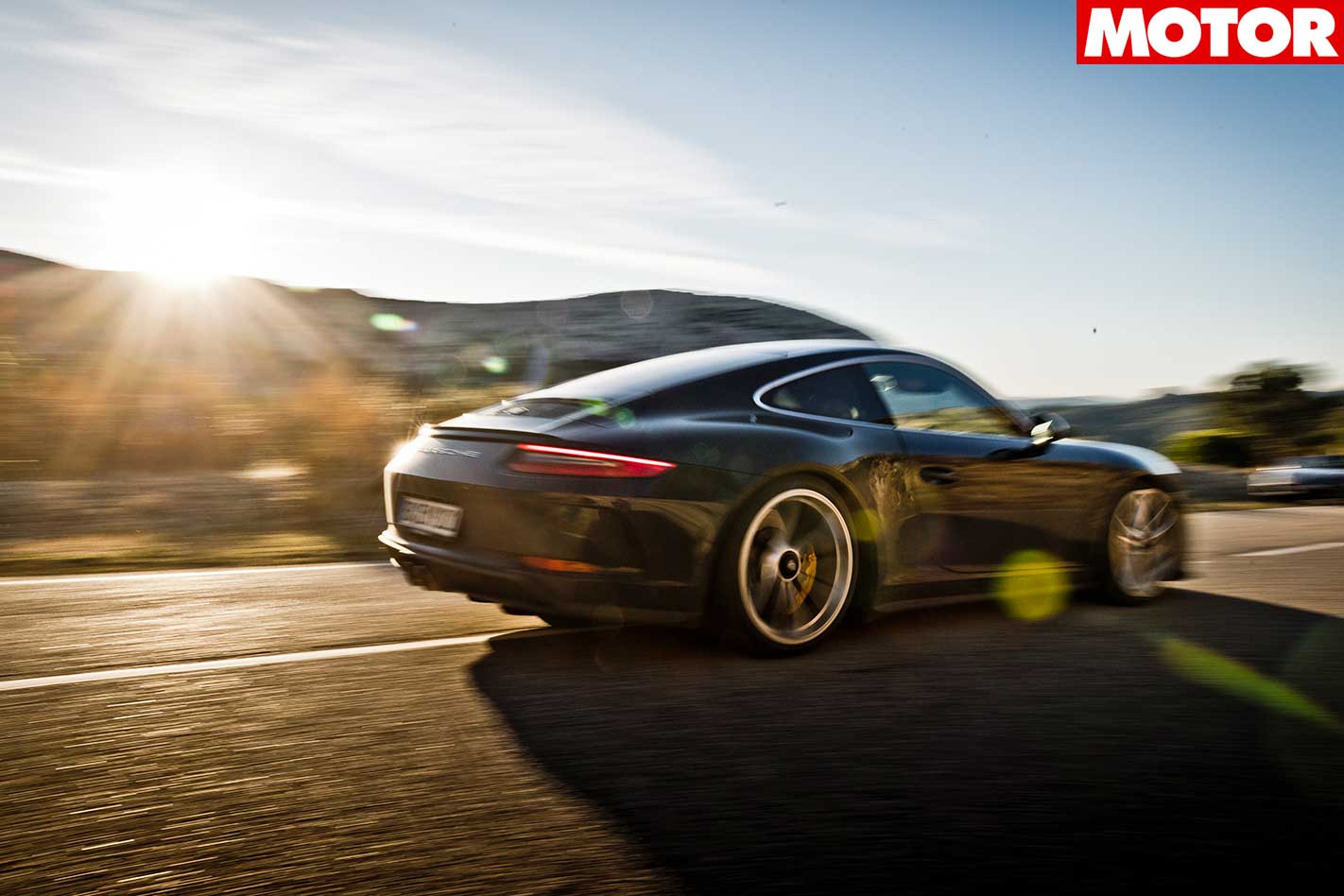
The answer is because the blend of the 309kW/500Nm Carrera S engine with PDK would have been too close for comfort to its bigger brother. Adding salt to the wound would be the fact that the beefier turbocharged Carrera S also gains 40Nm against the naturally aspirated 4.0-litre unit’s 460Nm in the GT3.
The most accessible and best balanced Porsche 911 this side of the turbo has always been the GTS – and it still is. Having said that, the Carrera T does, on certain roads and conditions, make the adrenalin flow even faster – with one caveat. To make it shine it requires specific turf. It loves tight corners, short climbs, deep dips, blind crests and sudden surface variations.
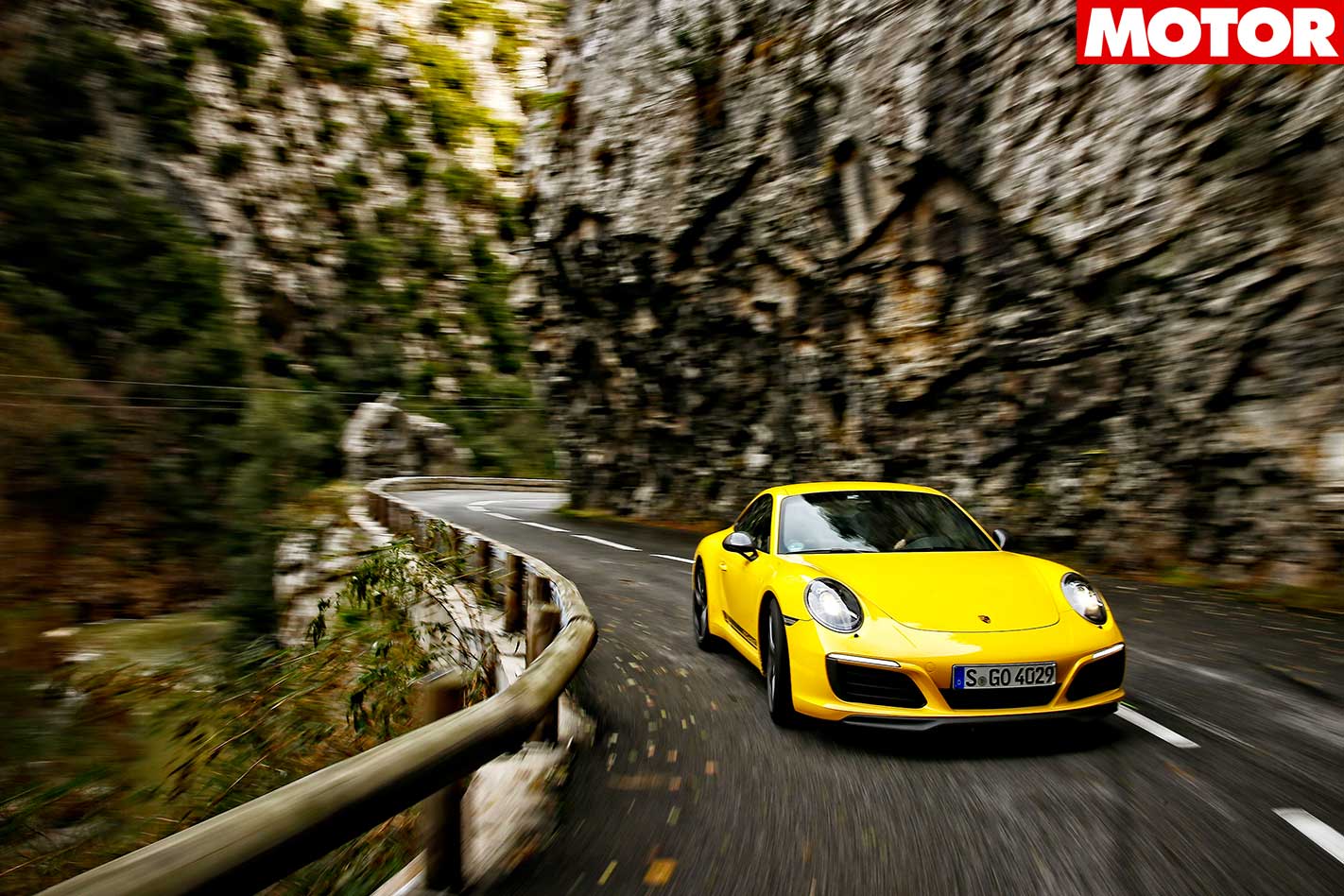
The benefits of the PDK have already been explained, but adding steer to all four wheels makes the car turn in with a newfound velocity. It also helps the wheels juggle torque and noticeably increases the high-speed stability.
In a nutshell, all three options are key confidence-enhancers. And we all know that confidence is the prerequisite for going really fast on winding roads.
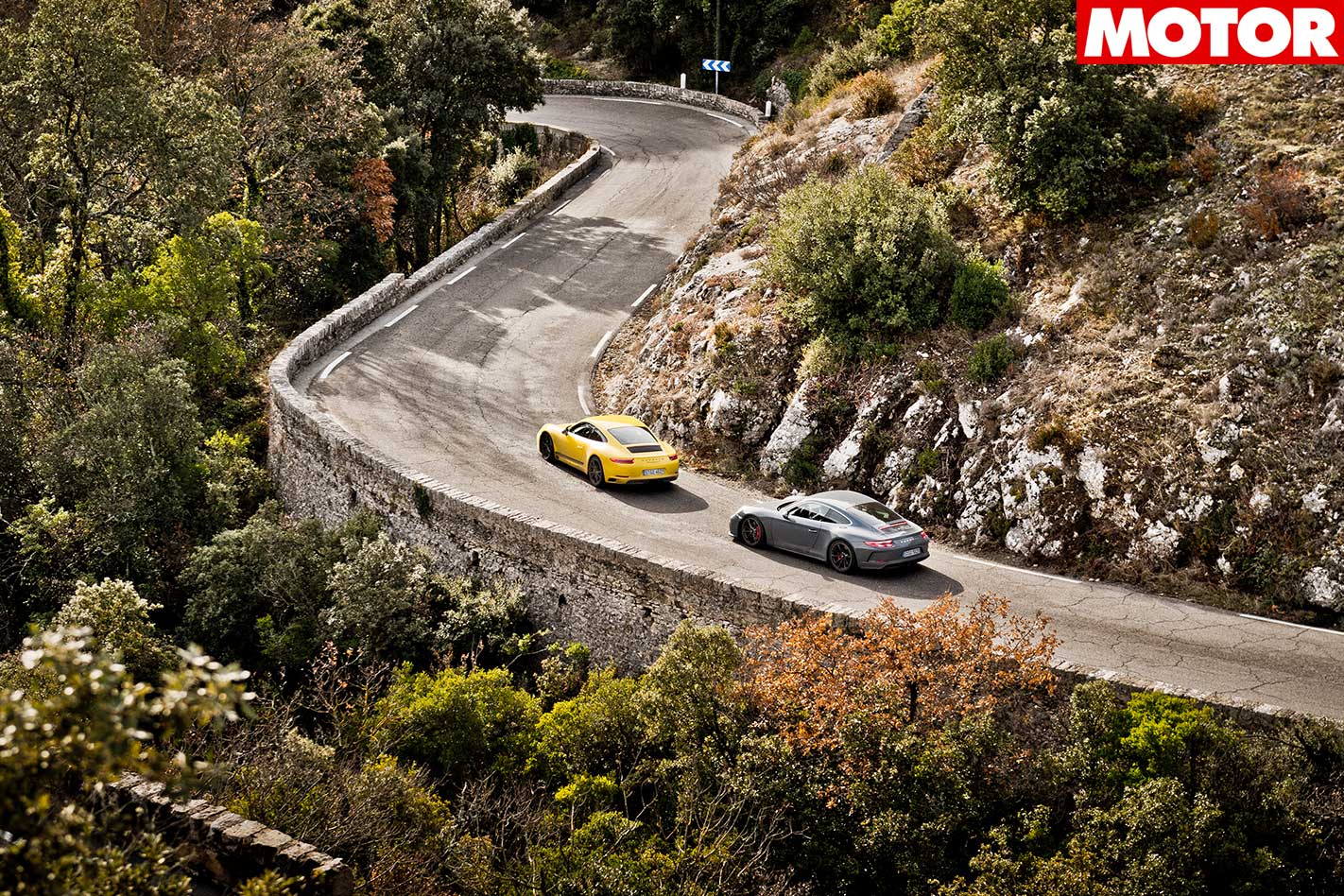
Unlike generations of rally drivers on these roads, in a modern context, we must always be prepared for oncoming traffic. Be it a courier driver, a dallying grandparent or absent-minded youth, today’s perils simply come in different forms.
With a camera rather than pace notes clutched in his trembling hands, my passenger’s facial expressions say ‘I’m not ready to die yet’. Although one can now almost sniff the limit of adhesion, the front end still turns in with vigour as it bites and hangs on. The carbon-ceramic brakes allow us to hone in on the GT3 Touring at the end of straights and a quick flick into first gear shoots us out of tight hairpins.
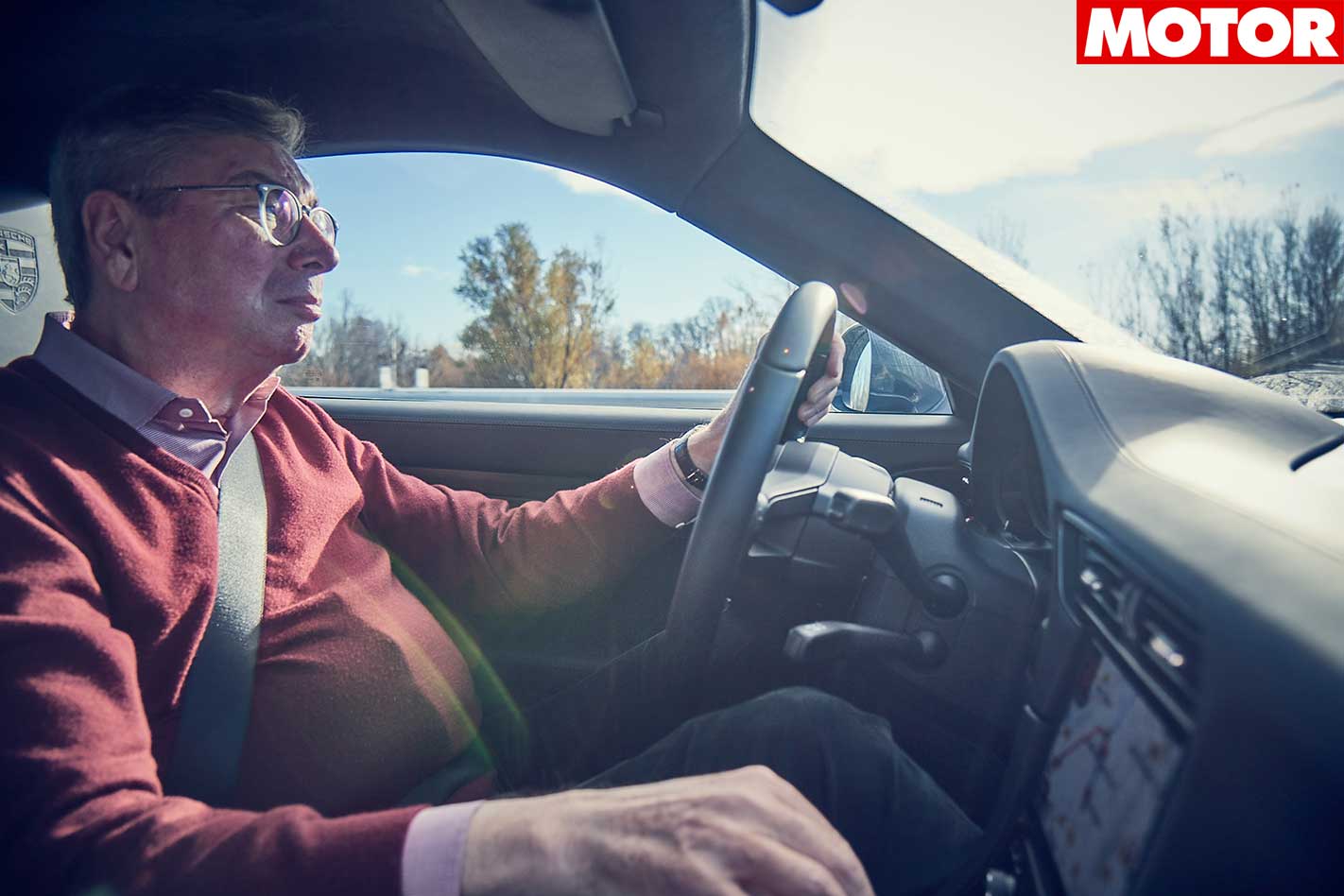
What sets the two 911s apart is the difference in character. While the Carrera T is more Sport than Touring, the GT3 Touring prefers plenty of room to move, open-radius corners and a topographic rhythm composed for high revs rather than low-end torque. The 4.0-litre flat six needs to be near its peak to shine, but at 6500rpm in first gear it’s a war between engine and transmission.
The same could be said for second gear. Below 4000rpm, this mechanical masterpiece wilfully works to rule. The ensuing 4000 to 6000rpm bracket pairs a fast rising torque curve with an even sharper throttle response.
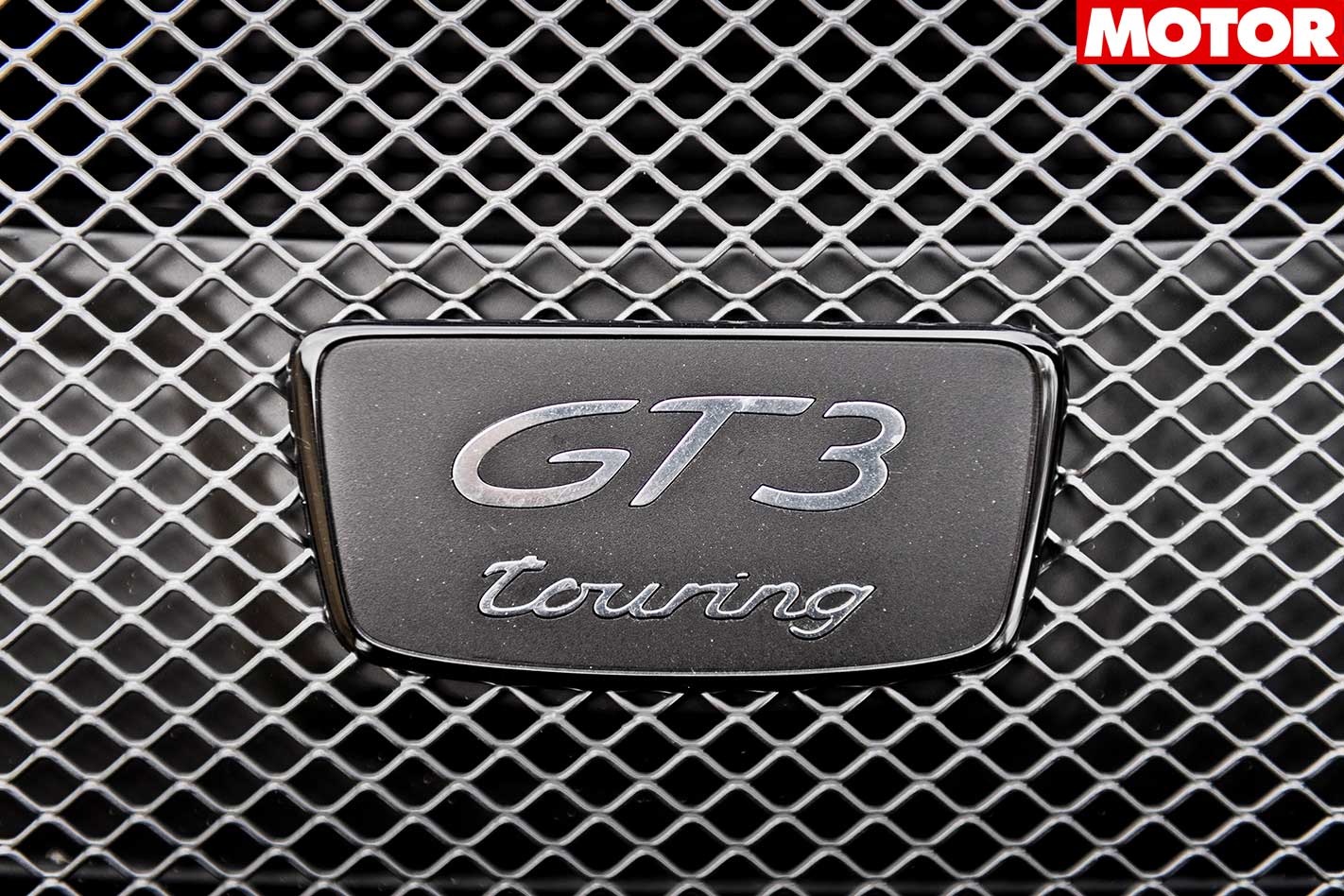
If pragmatists, purists and Porschephiles could have things their way, these two chapters of Touring history would have to be slightly rewritten. Starring in the edited script would be a moderately more expensive Carrera T powered by the 309kW Carrera S engine and a GT3 Touring available with PDK. “Dream on” is Weissach’s official answer to such proposals.
The makeshift option is to de-spoiler a GT3 and fit the Touring kit – a move Porsche intends to make as difficult as possible. So what other choices are there? One could wait until 2019 for the next 911 (dubbed 992), which is claimed to muster 294kW and 331kW as Carrera and Carrera S respectively.
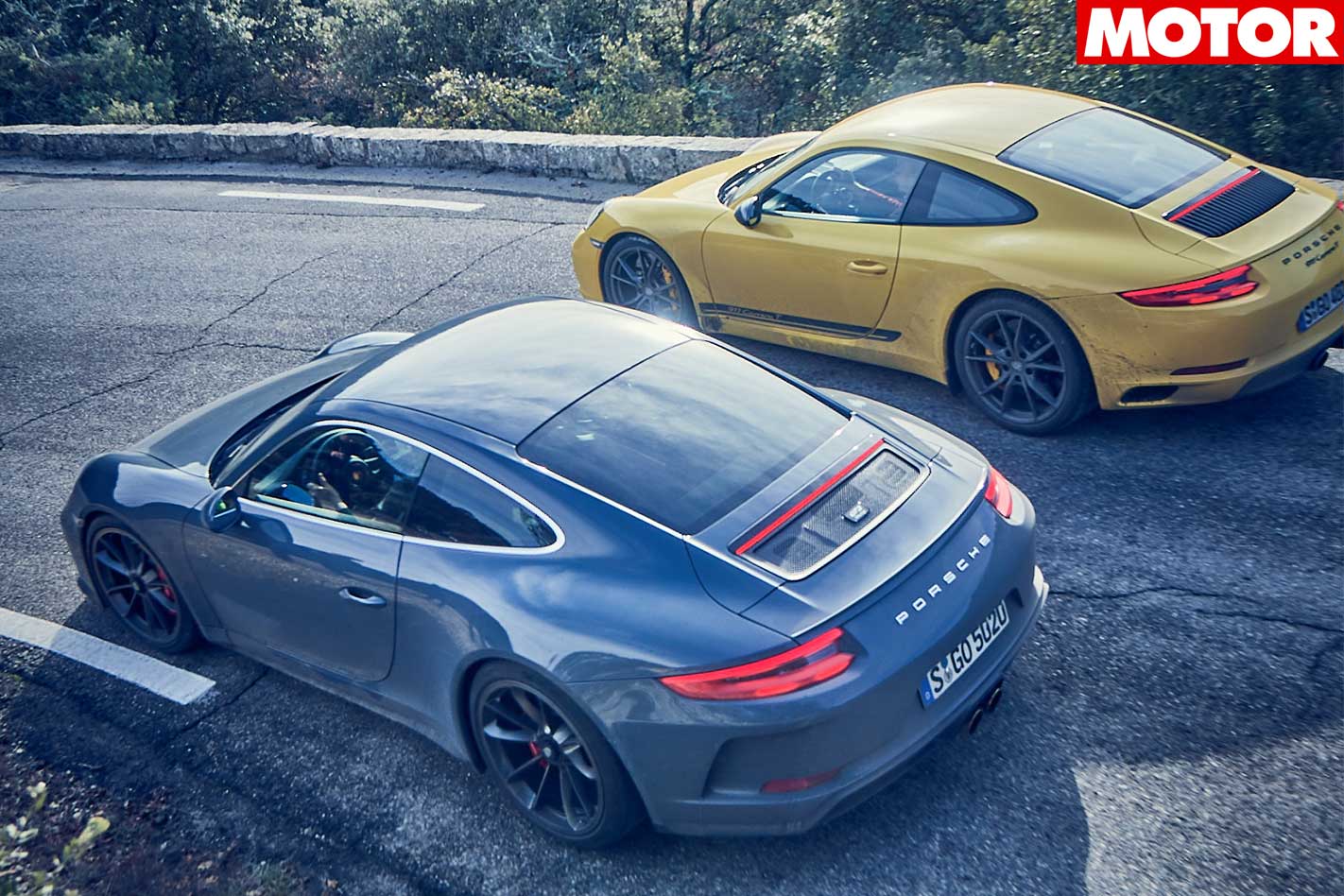
What would I do? I’d be nice to a rich aunt, buy a paint-to-sample GT3 Touring and keep it until the coffin lid shuts. In case that aunt isn’t quite rich enough, one could always opt for the upcoming 718 Cayman GT4.
Truth be told, Porsche and turbos are as much a part of now as they are the future. But in the case of the 911, which turns 53 this year, living in the past makes for such a charming alternative.
Fast Facts

| u00a0 | 2018u00a0Porsche 911 GT3 Touring | 2018 Porsche 911 Carrera T |
| BODY | 2-door, 2-seat coupe | 2-door, 2-seat coupe |
| DRIVE | rear-wheel | rear-wheel |
| ENGINE | 3966cc flat-6, DOHC, 24v | 2981cc flat-6, DOHC, 24v, twin-turbo |
| BORE/STROKE | 102.0 x 81.5mm | 91.0 x 76.4mm |
| COMPRESSION | 13.3:1 | 10.0:1 |
| POWER | 368kW @ 8250rpm | 272kW @ 6500rpm |
| TORQUE | 460Nm @ 6000rpm | 450Nm @ 1700-5000rpm |
| POWER/WEIGHT | 260kW/tonne | 191kW/tonne |
| TRANSMISSION | 6-speed manual | 7-speed manual |
| WEIGHT | 1413kg | 1425kg |
| SUSPENSION (f) | struts, coil springs, adaptive dampers, anti-roll bar | struts, coil springs, adaptive dampers, anti-roll bar |
| SUSPENSION (r) | multi-links, coils, adaptive dampers, anti-roll bar | multi-links, coils, adaptive dampers, anti-roll bar |
| L/W/H | 4562/1852/1271mm | 4527/1808/1285mm |
| WHEELBASE | 2457mm | 2450mm |
| TRACKS | 1551/1555mm (f/r) | 1545/1581mm (f/r) |
| STEERING | electrically assisted rack-and-pinion, all-wheel steer | electrically assisted rack-and-pinion, all-wheel steer |
| BRAKES (f) | 380mm ventilated discs, 6-piston calipers | 350mm ventilated discs, 4-piston calipers |
| BRAKES (r) | 380mm ventilated discs, 4-piston calipers | 330mm ventilated discs, 4-piston calipers |
| WHEELS | 20.0 x 9.0-inch (f); 20.0 x 12.0-inch (r) | 20.0 x 8.5-inch (f); 20.0 x 11.5-inch (r) |
| TYRE SIZES | 245/35 ZR20 (f); 305/30 ZR20 (r) | 245/35 ZR20 (f); 305/30 ZR20 (r) |
| TYRE | Michelin Pilot Sport Cup 2 | Pirelli P-Zero |
| PRICE | $326,900 | $238,400 |
| PROS | One of the worldu2019s great engines; superb handling | Great engine; tidy chassis; turbo torque |
| CONS | PDK as an option would be nice; hard to get hold of | Should be based on Carrera S; wrong manual |
| RATING | 5 out of 5 stars | 4 out of 5 stars |

